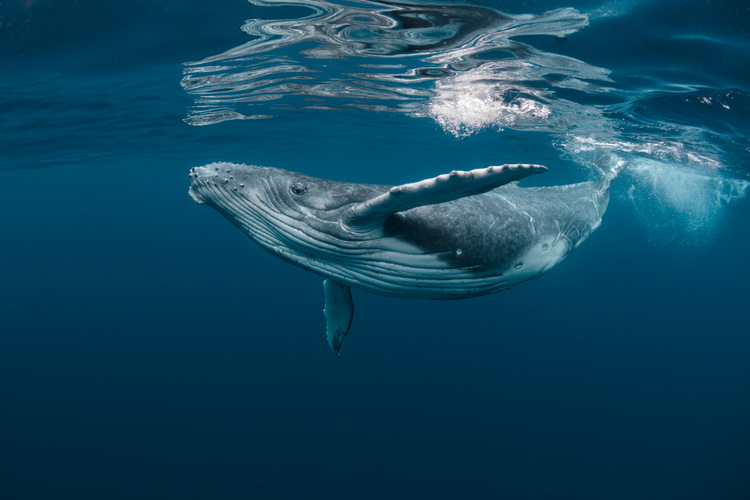
A marine heatwave could have been responsible for a 20 per cent decline in the Pacific humpback whale population
The humpback whale, a massive creature that can grow to 17 metres and weigh a whopping 36 tonnes, is the Pavarotti of the animal kingdom. Their underwater melodies are so tuneful that humpback whale songs have been recorded and released as records. But, as much as we enjoyed listening to their mournful melodies, we weren’t averse to hunting them either. By the late 1970’s the humpback whale population in the North Pacific had declined to a mere 1200-1600 animals. Then, with the 1986 ban on whaling the population of humpback whales started to rise until reaching an estimated 33,500 whales by 2012 in the North Pacific.
Conservationists celebrated as humpbacks were removed from the US Endangered Species Act and the IUCN re-classed them as of ‘Least Concern’. But then, between 2013-2021, something strange happened. Humpbacks in the North Pacific started dying of starvation in large numbers and nobody seemed quite sure why. It’s estimated that 7000 whales, or 20 per cent of the North Pacific humpback whale population died of starvation during this period and now scientists think they know the reason.
A study published this month by the Royal Society of Open Science notes that around the same period that the whales started dying the North Pacific experienced a long and notable marine heatwave with maximum sea temperatures between 2014 and 2016 some 3-6 Celsius above normal. And this, the study authors conclude, resulted in fewer nutrients for phytoplankton, which is the base of the entire underwater food chain. This meant there was less for plankton eaters to feast on, which meant they started to starve, which in turn led to the animals that fed on them starving and so on up through the whole marine food chain.
To come up with the population estimates the scientists used crowd-sourced photos of whales submitted to the website, Happywhale. Every whale has unique tail flukes and so by using AI to help pick out the patterns the team were able to identify individuals and estimate the overall population. The team had expected to see that humpback whale populations were continuing to increase as they had done every year since the 1986 ban on whaling and so were surprised to find such a significant decline.
‘The marine heatwave really diminished the productivity of the ocean in a way that critically undermined humpback whale populations,’ said Ted Cheeseman, founder of Happywhale and a biologist at Southern Cross University in Lismore, Australia who led the study. ‘Humpback whales are flexible, and willing to switch from krill to herring or anchovies to salmon fry. But when the whole ecosystem decreases in productivity, it hurts them big time’.
But, it wasn’t just the initial heat wave that led to such a population decline. Many of the whales that didn’t die were left underweight and weak and either failed to breed in later seasons or their calves died.
‘This is unlikely to be a one-time event and if we do not rapidly curb the causes of climate change globally, more marine heatwaves decreasing ocean productivity worldwide will be our future,’ says Cheeseman. ‘This will hit humpback whales and other whale species, but we should recognise these whales are indicators of ocean health. We humans depend on that ocean health for many things’ he continues.
Related articles:
- Half of all mangrove forests at risk of collapse - 14 July 2024
- Fibreglass particles discovered in oysters and mussels - 4 July 2024
- Grey whales in the northeastern Pacific are shrinking - 19 June 2024


